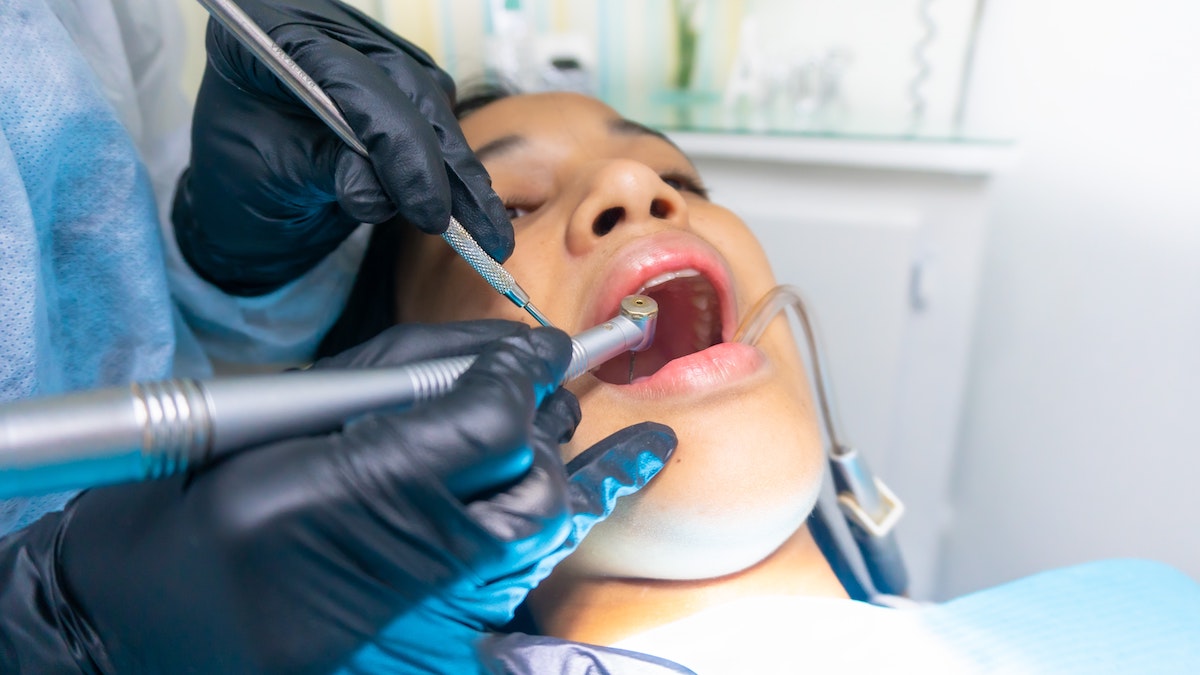Dentists suggest that patients have their teeth cleaned by a dental hygienist twice a year to remove plaque that can cause cavities. Deep cleaning also removes plaque, but is a more extensive procedure. It is only recommended only for people experiencing symptoms of gum disease, also known as periodontitis.
Gum disease is an infection of the gum tissue. Warning signs include red, swollen, and painful gums. Patients may also experience bad breath and receding tissue at the gumline.
The condition starts out as gingivitis, which can often be reversed by improving dental hygiene. If left alone, gaps called pockets will form between tooth and gum, exposing the root to the infection-causing bacteria. When this happens, the dentist may recommend a deep cleaning to remove decay and allow the gums to heal.
Deep Cleaning Treatments
Deep cleaning therapy is called periodontal scaling and root planing, abbreviated as SRP. Like regular teeth cleaning, it removes plaque. However, a deep cleaning goes below the gumline to treat the entire tooth, including the root.
The procedure can be completed at the dentist’s office, but often the dentist will refer patients to a gum specialist called a periodontist. They will use some of the same tools as a dental hygienist to scrape the teeth, but may also use stronger, ultrasonic tools. Because it is more involved, the process may be spread over multiple office visits. Using a local anesthetic or sedation is common when the problem is severe, since working near the tooth’s root can be painful.
After applying an anesthetic to numb the patients teeth and gums, the periodontist scrapes plaque off of the teeth below the gum. This is called scaling or debridement.
Once the plaque is removed, the next step is root planing. The periodontist uses tools to smooth out the surfaces of the roots. This takes care of any remaining bacteria, resulting in a clean, even surface that the gums can reattach to.
What to Expect After Treatment

Even after a routine teeth cleaning, teeth can be sensitive. Some people even worry that a cleaning can damage teeth and gums. That is highly unlikely, but hygienists need to use more force if there is a lot of stubborn plaque. It is understandable that this might hurt a bit.
The aftereffects of a deep cleaning can feel even more extreme. Patients usually have some mild to moderate pain and sensitivity for the first day or two, along with a small amount of bleeding. Within a week the gums will start to heal and reattach to the roots of the teeth. The initial discomfort should be gone. Full recovery and reattachment can take up to 6 or 8 weeks, but patients are usually back to normal eating, drinking, brushing, and flossing within the first week.
Deep Cleaning Aftercare
After deep cleaning treatment, it is important to follow instructions provided by the dentist or periodontist. In general, this means treating the teeth and gums gently until they feel better and healing has begun. Some specific recommendations include:
Let anesthetic wear off completely. Wait until the mouth is no longer numb before eating anything or brushing.
Stick to soft foods. Patients’ mouths will likely be too sore to bite into an apple or chew a piece of steak. Still, even once they feel better, be careful about attempting anything crunchy or chewy or that could be stuck under gums like popcorn. This could damage the gums before they have a chance to heal.
Avoid hot liquids. Hot beverages can increase bleeding in the first few days.
Brush and floss gently. Patients should be able to brush the same day as treatment, but very gently. Flossing can usually resume the next day.
Antibiotics. Because treatment exposes the tooth roots and gums, there is a risk of infection. The dentist may prescribe antibiotics. Patients should continue to take the entire course of medication as prescribed.
Over-the counter medications. Tylenol or Advil are fine to use for minor pain and swelling.
Ice for swelling. Gums might feel bruised after the procedure. An ice pack can relieve pain and swelling.
Rinse with salt water. A saltwater rinse several times a day can help with discomfort. Avoid any rinsing within the first 24 hours, however.
Causes for Concern After Deep Cleaning

Even though deep cleaning can be painful, the discomfort typically goes away within the first week or sooner. If pain lasts longer or becomes more intense as the days go by or if there is excessive bleeding, contact the dentist immediately.
Aside from the possibility of infection, there are few concerns with deep cleaning. It is usually a straightforward procedure with little chance of complications.
Some patients may notice that their gum recession has not improved after treatment. In fact, once the swelling associated with gum disease goes away, the gums could appear to be receding even more than before the deep cleaning. This is normal for some people. In severe cases of periodontal disease, the gum tissue is too damaged to grow back completely.
If the situation is bothersome, the patient may be a candidate for laser gum reshaping or recontouring. This typically follows pocket reduction surgery, where an oral surgeon closes the gaps between the teeth and gums. Or regeneration therapy which grafts new gum tissue to fill in the gumline.
Deep Cleaning for Gum Health
Dentists agree that deep cleaning that includes periodontal scaling and root planing is the most effective non-surgical treatment for periodontitis. Although it can be uncomfortable, it is often the best thing to avoid gum disease from doing further damage.
As with any dental issue, prevention can eliminate the need for deep cleaning treatments. Practice good oral hygiene by brushing and flossing regularly. See a dentist twice a year for checkups and a professional cleaning. And address any early signs of gum disease right away.If you need a referral to a dentist or periodontist in your area, use our online search tool.


